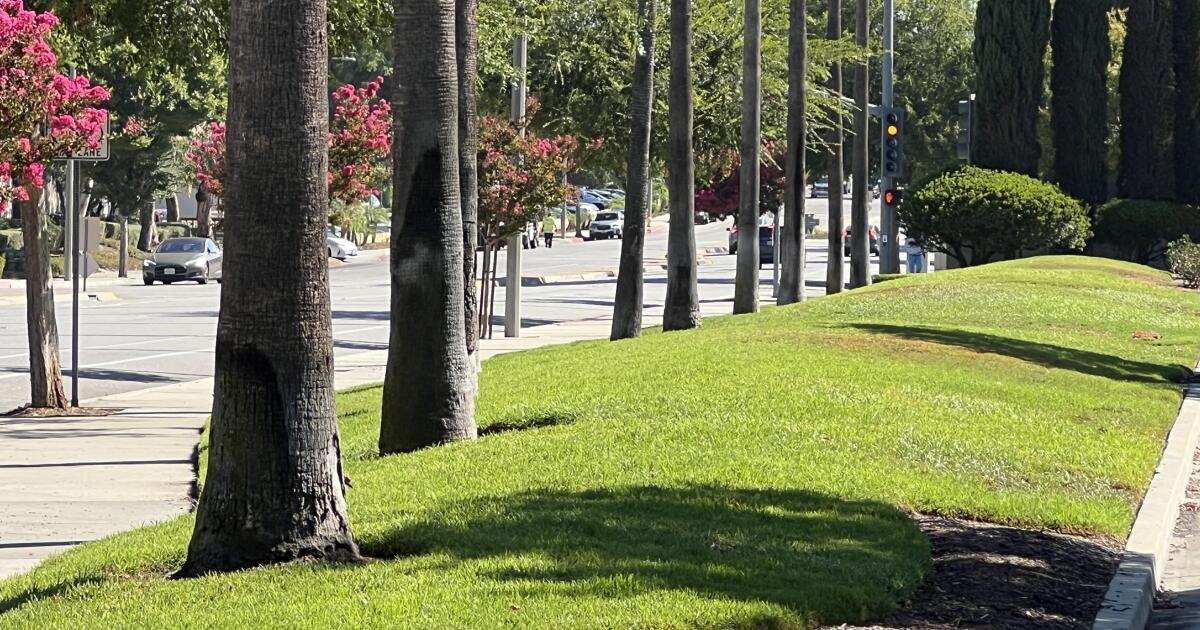The days of large, unused public and commercial laws seem to have been numbered in California, and the metropolitan water region offers an incentive to accelerate their deaths in Southern California: it offers a discount of 7 $ per square and takes its place with sustainable faults.
The proposal, which entered into force on September 1, the biggest discount presented by the agency and previously a grant of $ 30 million from the California Water Resources Department and a $ 96 million commercial and public customers, a grant of 96 million dollars from the Federal Bureau of System Protection and Efficiency of Trade.
Krista Guerrero, a senior resource specialist for the water zone that manages the grass change program of the agency and specializes in open water efficiency, is still $ 3 per square meter.
Essentially, Guerrero said that the Metropolitan Water Zone tries to prepare some of the largest water users of the state for a new state law that came into force on 1 January 2027 for the EU 1572, and that public institutions, including schools and municipalities, can be processed to irrigate non -functional grass. The same requirements will enter into force for business owners and HOAs in 2028 and other common interest properties that began in 2029.
It is defined as grass used for functional grass, entertainment and community meetings – even areas where children and pets can run and play like outer houses or school gardens.

Irrigation systems that send water into the air will not be allowed for rules for the new square meter of $ 7 $ grass lifting discounts.
(Rich Pedroncelli / Associated Press)
“But walking between a grass to reach the entrance of a building is not functionally accepted,” Guerrero said. “Having a grass around a parking lot is not functional. If you just focus on it to reap it, it means that it is often dysfunctional.”
The agency believes that commercial and public institutions control approximately 20,000 acres of functional grass in Southern California, Guerrero said that if he quit irrigation, there would be too ugly brown land in a few years.
“The bill requires them to quit irrigation only [nonfunctional lawns]That’s why we hope to motivate them to beautify their property instead of just closing their irrigation, ”Guerrero said. We’re not just looking at water savings. We also focus on biodiversity and environmental benefits. “
For example, in order to be appropriate for discount, applicants need a plan that is approved to protect the water of honor such as building and dry stream deposits that collect and store rainwater instead of allowing it to escape in the street. The new landscape should also include at least three water efficiency plants per 100 feet square, Guerrero said, ıl Depending on the plants they choose, 50% to 70% of the project area will cover in full maturity. ”

A grass mound between the sidewalks in a small shopping center in Pasadena can be a candidate for a new discount of $ 7 per square meter for the dysfunctional grass of the metropolitan water area.
(Jeanette Marantos / Los Angeles Times)
The new landscape does not require a irrigation system, but if a new one is installed, it cannot contain overhead sprinkler and the project area cannot contain harsh landscapes unless it is permeable, ie water can be absorbed into the soil.
Unlike many such sites, the agency’s website includes a long acceptable plant list that starts with a long list of California domestic shrubs, herbs and ground covers compiled by Guerrero. The agency said that he was working with Theodore Payne Foundation to expand the water efficient landscape certification program to include training contractors on how to properly protect a local plant view.
“We are very interested in providing design options for people who want flowers such as flowers, colors, odors and polls, or people who want grass alternatives such as Kurapia and Diondia,” he said.
“We want a different list,” he said, “Because we want to maximize the advantages as much as possible [with these new landscapes] – Water savings, habitat creating, improve air quality and cool. The opportunity to increase the environmental benefits of your property while showing that you are a part of the solution to your customers. “



